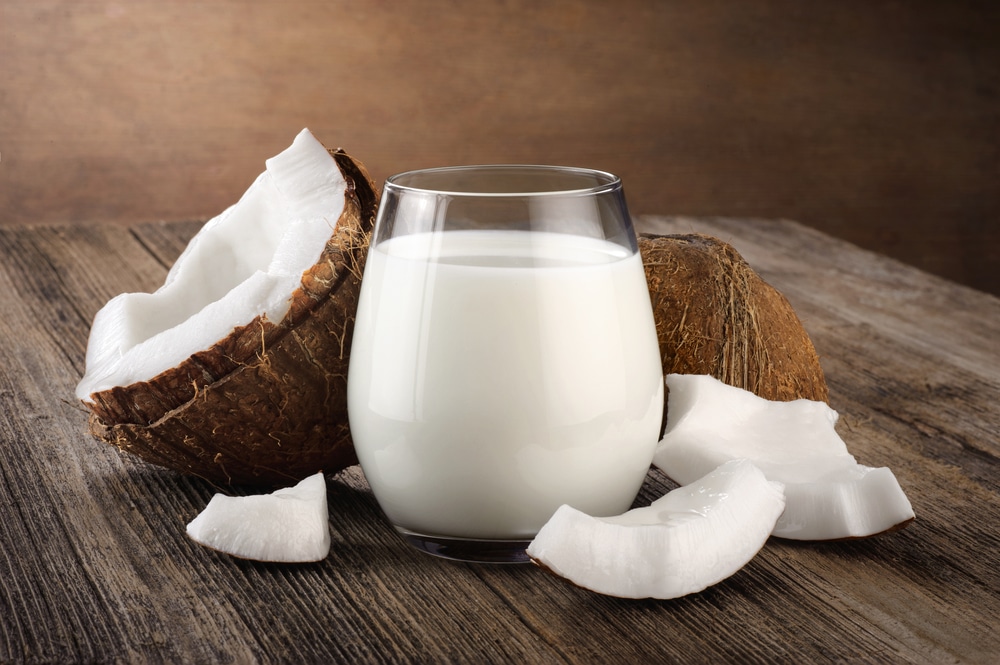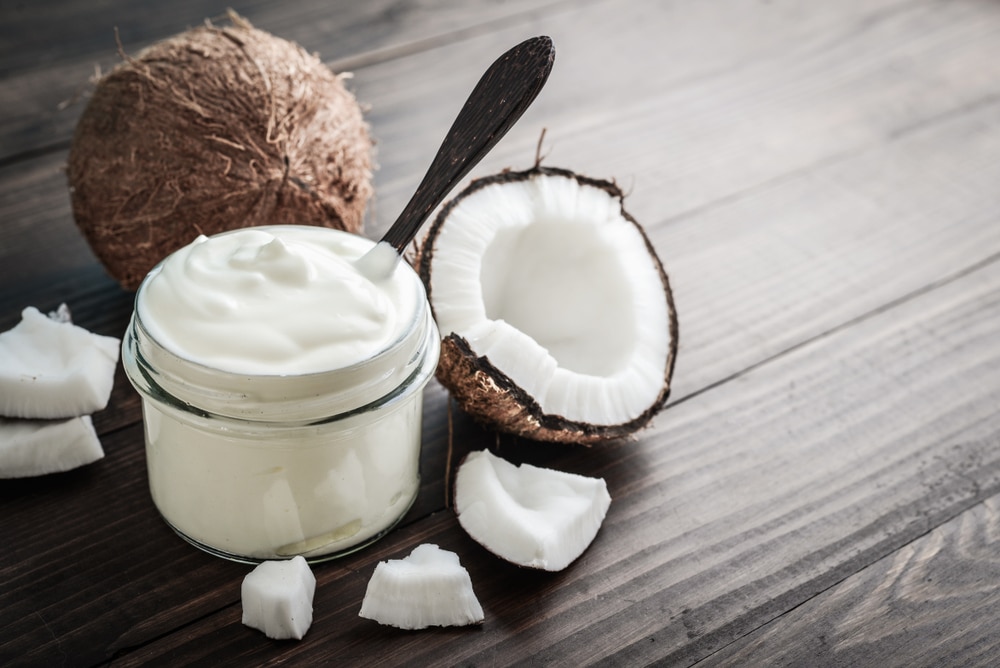You may have noticed that coconut milk and coconut cream are next to each other on the grocery store shelves and have almost the same packaging.
They seem so similar that you could easily mistake one for the other. They may even seem like perfect substitutes for each other — but are they?
The main difference between coconut milk and coconut cream is the fat content, just as it is with dairy milk and cream.
While they are similar in many ways, they aren’t exactly interchangeable either.
Keep reading to learn about the characteristics of each and how they can — and can’t — be used as substitutes in your everyday recipes.
What Is Coconut Milk?

Coconut milk is simply an emulsion of coconut and water. Most store-bought varieties also contain stabilizers and preservatives. These help keep it fresh, as the high-fat content in coconut milk makes it easy to spoil quickly.
It is possible to make coconut milk at home. It’s as simple as boiling coconut flesh in water, blending it up, and finally straining it through a cheesecloth or something similar to make sure that there are no clumps or chunks.
Don’t throw the pulp away, either — you can make coconut flour by simply baking the leftover pulp at a very low temperature to fully dehydrate it, then blending it up to make sure it’s smooth. Coconut flour is a great flour substitute for those who are gluten-free!
Looking to buy coconut milk? See where to find coconut milk in grocery store
What Is Coconut Cream?

Coconut cream is also an emulsion of coconut and water, but it has a higher ratio of coconut to water, making it thicker and more decadent. This difference in consistency is comparable to how heavy cream differs from dairy milk.
It must contain at least 20% fat to be classified as coconut cream, whereas coconut milk only has 10% fat. It means that coconut cream is more paste-like, which makes it great for recipes that require more fat without a ton of added moisture.
Looking to buy coconut cream? See where to find coconut cream in grocery store.
Can I Use Coconut Cream Instead of Coconut Milk?
You may be able to substitute coconut cream for coconut milk in a pinch, but it almost always depends on the dish you are making.
Especially when making baked goods, you run the risk of using too much fat or too little moisture — and this can wreak havoc on things like cakes and cookies. You could potentially solve this problem by diluting coconut cream with some warm water, which would leave you with coconut milk.
You would just have to try not to under or over dilute it, as this would also affect things like baked goods. Ideally, coconut milk should be opaque, thoroughly blended (no chunks!), and about as thick as whole milk.
However, substituting coconut milk for coconut cream is a bit more complicated.
In theory, you could cook the coconut milk on the stovetop to evaporate some of the water and make it richer and thicker — more like coconut cream. However, this needs to be done with extreme caution — especially if you only have enough product to use for the recipe you’re making!
If you cook coconut milk for too long at too high of a temperature, it can curdle — and that’s likely not what you’re going for. To keep it smooth, you will need to heat it on the stove gently, making sure to stir it often.
Depending on the amount of time you have, there is a more straightforward solution.
You can leave a can of coconut milk in a cool place (the refrigerator, preferably) for a few hours before use. When you open the can, you will find that the solids and water have separated, leaving you with glorious coconut cream at the top of the can!
Just be careful when scooping it out, as you don’t want to get much, if any, of the water underneath to mix with cream.
What Can I Make with Coconut Cream and Milk?
Coconut products are incredibly versatile and feature in a variety of different cuisines and types of dishes.
The only thing to keep in mind is that the distinct coconut flavor is usually very prominent in dishes that feature it. Hence, it’s not the best dairy substitute if you or the people you’re cooking for don’t like that flavor (but if that’s the case, then you likely wouldn’t be reading this in the first place).
Many people think of coconut as having more of a sweet flavor profile, which makes sense since it’s a fruit. There are all sorts of desserts that use coconut milk or cream as a key ingredient.
You can use both coconut cream and coconut milk to make a delicious substitute for dairy ice cream, and many Asian cuisines use it for cooking sticky rice and serving it with mango or other fruits.
These desserts, among others, are perfect for vegans and people with an intolerance to lactose. Coconut cream can also be whipped like heavy cream, resulting in a delicious vegan frosting for whatever your heart desires.
Coconut milk and coconut cream have many uses on the savory side of things. The fat content helps to combat high spice levels, so it’s excellent for spicy dishes that need something to bump it down a notch.
It is a staple ingredient in curries and is often used in other kinds of sauces and soups as well. Its flavor profile especially compliments foods like salmon, so it’s a great ingredient to keep on hand.
In Summary
In short, coconut cream vs coconut milk are essentially the same, just with different ratios of coconut to water. You can dilute coconut cream to make coconut milk, and you can cook coconut milk down to become more like coconut cream if needed.
However, there are other things to consider before using these as substitutes, like an altered fat content and its effect on baked goods. Coconut milk and coconut cream are both versatile ingredients that can add a unique flavor and luscious texture to your dish.






